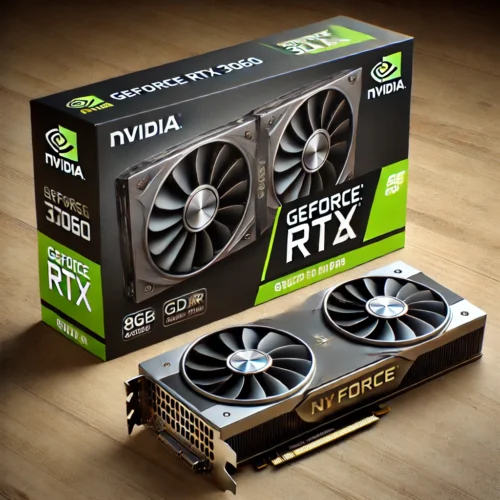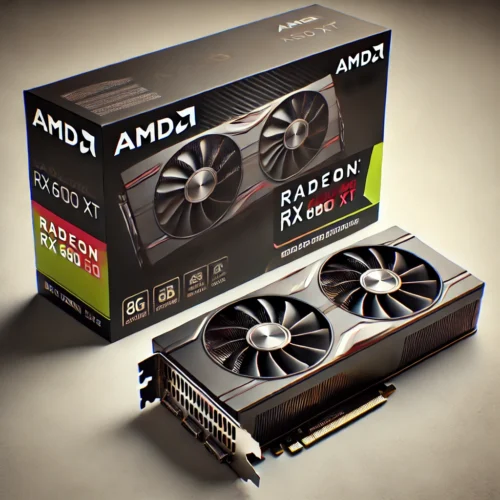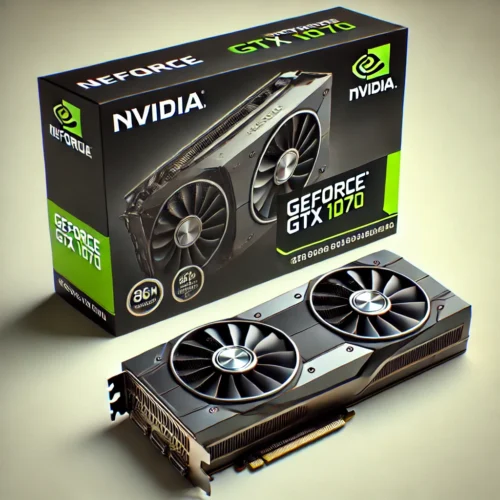8GB Graphics Card
In the world of gaming, graphics cards are crucial in delivering a smooth, visually stunning experience. With the increasing demands of modern games, gamers often wonder if an 8GB graphics card is sufficient for their needs. This blog post dives deep into the capabilities of an 8GB graphics card, exploring its performance, suitability for various gaming setups, and whether it holds up in 2024.
An 8GB graphics card refers to a GPU with 8 gigabytes of video RAM (VRAM). VRAM is critical for handling high-resolution textures, large game environments, and multiple graphical processes simultaneously. The amount of VRAM can directly impact how well a game runs, particularly at higher settings and resolutions.
Performance in Modern Games
One of the most common questions among gamers is whether an 8GB graphics card is good enough for running the latest titles. The short answer is yes—an 8GB graphics card can handle most modern games at 1080p and 1440p resolutions with high to ultra settings. Here’s a breakdown of what you can expect:
- 1080p Gaming: At 1080p resolution, an 8GB graphics card is more than sufficient for high settings in almost all games. Whether you’re playing fast-paced shooters, expansive open-world games, or graphically intense RPGs, this amount of VRAM ensures smooth gameplay with detailed textures and effects.
- 1440p Gaming: At 1440p, an 8GB GPU still performs admirably. You can enjoy most games on high settings, though some of the most demanding titles might require you to tweak settings slightly to maintain optimal frame rates.
- 4K Gaming: While 4K gaming is more demanding, an 8GB graphics card can still provide a decent experience. However, you may need to lower some settings or rely on technologies like DLSS (Deep Learning Super Sampling) to achieve playable frame rates.
Here’s a table listing some popular games that can be played on an 8GB graphics card, along with the recommended settings for different resolutions (1080p, 1440p, and 4K).
| Game Title | 1080p Settings | 1440p Settings | 4K Settings |
|---|---|---|---|
| Cyberpunk 2077 | High/Ultra | Medium/High | Low/Medium |
| Red Dead Redemption 2 | High/Ultra | Medium/High | Low/Medium |
| Call of Duty: Warzone | High/Ultra | High | Medium |
| Assassin’s Creed Valhalla | High/Ultra | Medium/High | Low/Medium |
| Fortnite | Epic | High | Medium |
| Apex Legends | High | High | Medium |
| The Witcher 3: Wild Hunt | Ultra | High/Ultra | Medium |
| Horizon Zero Dawn | High/Ultra | Medium/High | Low/Medium |
| Far Cry 6 | High | High | Medium |
| Battlefield V | High/Ultra | High | Medium |
| Shadow of the Tomb Raider | High/Ultra | Medium/High | Low/Medium |
| GTA V | Ultra | High/Ultra | Medium |
| Doom Eternal | High/Ultra | High | Medium |
| Metro Exodus | High/Ultra | Medium/High | Low/Medium |
| Rainbow Six Siege | Ultra | High/Ultra | High |
| Resident Evil Village | High/Ultra | Medium/High | Low/Medium |
| Control | High | Medium/High | Low/Medium |
| Overwatch | Epic | High | Medium/High |
| Valorant | High | High | High |
| League of Legends | Ultra | Ultra | Ultra |
Best 8GB Graphics Cards on the Market
When it comes to selecting an 8GB graphics card, there are several excellent options available. Here are a few top contenders:
1. NVIDIA GeForce RTX 3060: Offers great performance at 1080p and 1440p with ray tracing capabilities.
- Specifications:
- GPU Architecture: Ampere
- CUDA Cores: 3584
- Base Clock: 1320 MHz
- Boost Clock: 1777 MHz
- Memory: 8GB GDDR6
- Memory Interface: 192-bit
- Memory Bandwidth: 360 GB/s
- Ray Tracing Cores: 28
- Tensor Cores: 112
- TDP: 170W
- Recommended PSU: 550W
- Price: The NVIDIA GeForce RTX 3060 typically ranges from $300 to $400 depending on the manufacturer and specific model.
2. AMD Radeon RX 6600 XT: Known for its efficiency and strong performance in a wide range of games.
- Specifications:
- GPU Architecture: RDNA 2
- Stream Processors: 2048
- Base Clock: 1968 MHz
- Boost Clock: 2589 MHz
- Memory: 8GB GDDR6
- Memory Interface: 128-bit
- Memory Bandwidth: 256 GB/s
- Ray Accelerators: 32
- Infinity Cache: 32MB
- TDP: 160W
- Recommended PSU: 500W
- Price: The AMD Radeon RX 6600 XT is generally priced between $300 and $400.
3. NVIDIA GeForce GTX 1070: An older but still powerful option for 1080p and 1440p gaming.
- Specifications:
- GPU Architecture: Pascal
- CUDA Cores: 1920
- Base Clock: 1506 MHz
- Boost Clock: 1683 MHz
- Memory: 8GB GDDR5
- Memory Interface: 256-bit
- Memory Bandwidth: 256 GB/s
- TDP: 150W
- Recommended PSU: 500W
- Price: The NVIDIA GeForce GTX 1070 can be found in the used market for around $150 to $250, depending on the condition and specific model. New units are rare and can be significantly more expensive.
Comparing 8GB with Other Graphics Cards
To understand the value of an 8GB graphics card, it’s helpful to compare it with other common configurations, such as 4GB and 16GB cards.
- 8GB vs. 4GB Graphics Cards: Compared to 4GB graphics cards, an 8GB GPU offers significantly better performance in modern games. The additional VRAM allows for higher texture quality and smoother gameplay, especially in open-world games and titles with large maps. If you want to learn more about 4gb graphics card or if they are good for gaming in 2024 then click here.
- 8GB vs. 16GB Graphics Cards: A 16GB graphics card is generally overkill for most gamers, particularly at 1080p and 1440p resolutions. However, if you’re a content creator or plan to game at 4K with all settings maxed out, the extra VRAM can be beneficial.
Future-Proofing: Is 8GB Enough?
As game developers continue to push the boundaries of graphical fidelity, the question of future-proofing becomes important. While an 8GB graphics card is more than capable for today’s games, how well will it perform in the next few years?
- Upcoming Titles: As games continue to evolve, their graphical demands will increase. An 8GB graphics card will likely still perform well for 1080p and 1440p gaming in the near future. However, for 4K gaming or the highest settings in the most demanding titles, you might start to notice limitations.
- VR and Ray Tracing: If you’re interested in virtual reality (VR) or ray tracing, an 8GB graphics card can provide a solid experience. However, these technologies are highly demanding, and future advancements may require more VRAM to deliver the best results.
Budget Considerations
For many gamers, budget is a key consideration. The good news is that 8GB graphics cards strike a balance between performance and cost, making them an excellent choice for budget-conscious gamers. Whether you’re building a new rig or upgrading an existing one, an 8GB card offers great value.
For those interested in a slightly more affordable option, consider exploring How Good is a 6GB Graphics Card for Budget Gaming Rigs?. This post delves into the capabilities of 6GB graphics cards, providing insights for gamers on a tighter budget.
Conclusion
In conclusion, an 8GB graphics card is more than capable of delivering an excellent gaming experience in 2024. It’s well-suited for 1080p and 1440p gaming, handles modern titles with ease, and offers a degree of future-proofing that ensures you’ll be able to enjoy upcoming games as well. While it might not be the top choice for 4K gaming or ultra settings in the most demanding future titles, it strikes an ideal balance between performance, price, and versatility for most gamers.
Whether you’re a casual gamer or someone who enjoys the latest AAA titles, an 8GB graphics card is a solid investment that will keep you gaming at high settings for years to come.
FAQs
1. Is 8GB good for a graphics card?
Yes, an 8GB graphics card is generally good for gaming, especially at 1080p and 1440p resolutions. It offers enough VRAM to handle most modern games at high settings, providing smooth performance and high-quality visuals. For gamers looking to future-proof their setup, 8GB is considered a balanced choice that can handle current and upcoming titles without breaking the bank.
2. Is there an 8GB graphics card?
Yes, there are several 8GB graphics cards available on the market. Popular models include the NVIDIA GeForce RTX 3060, AMD Radeon RX 6600 XT, and NVIDIA GeForce GTX 1070. These cards are well-suited for gaming, content creation, and other graphic-intensive tasks, offering solid performance across a range of applications.
3. How many GB is a good graphics card?
The ideal amount of VRAM for a graphics card depends on your usage. For gaming, 6GB to 8GB is generally sufficient for 1080p and 1440p gaming. If you plan to game at 4K, engage in VR gaming, or perform heavy content creation tasks, a graphics card with 8GB or more is recommended. For basic tasks or older games, even a 4GB card can be adequate.
4. Is a 2GB graphics card OK?
A 2GB graphics card is considered outdated for modern gaming but can still be okay for less demanding tasks, such as older games, casual gaming, or general desktop use. However, for newer titles or any graphic-intensive work, a 2GB card may struggle to provide smooth performance and would require significantly reduced settings. If you want to learn what games can you play using a 2gb graphics card then click here.



